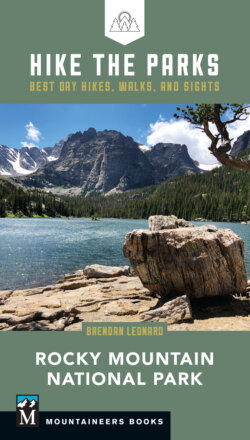Читать книгу Hike the Parks: Rocky Mountain National Park - Brendan Leonard - Страница 12
На сайте Литреса книга снята с продажи.
HUMAN HISTORY
ОглавлениеThe human history of the area we’ve called Rocky Mountain National Park for the past hundred years goes back to the time the glaciers that had covered the area receded, roughly eleven thousand years ago. Using the route that is now Trail Ridge Road, early humans hunted mammoth and, later, bison. Sometime between ad 1000 and 1300, Ute people moved into the area, although never permanently, and dominated until the early 1800s, when they were pushed out by the Arapaho people. The Ute and Arapaho people used the Ute Trail to move to and from the Great Plains, where they hunted bison. The Arapaho left the area prior to the 1860s, when white settlers began to arrive.
In 1803, the United States government claimed the land through the Louisiana Purchase, and the 1800s brought the first exploration by non-indigenous peoples, including hopeful miners, homesteaders, and hunters, and with them, tourists. Around the turn of the twentieth century, the movement to preserve wild lands in the United States gained momentum, and by 1909, local guide and lodge owner Enos Mills began a campaign of lecturing, letter writing, and lobbying to establish a national park in the area—what would be the tenth US national park. The efforts of Mills and other advocates paid off in 1915, when President Woodrow Wilson signed the Rocky Mountain National Park Act, officially protecting the park, then 358 square miles (927 square km). Through acquisitions and donations since the park’s creation, it has since grown to the 415 square miles (1075 square km) it covers today.
A hiker passes through a stand of aspens on the trail to Bridal Veil Falls (Hike 15).
A marker along the Tundra Communities Trail (Hike 27) displays the distance to other national parks.
